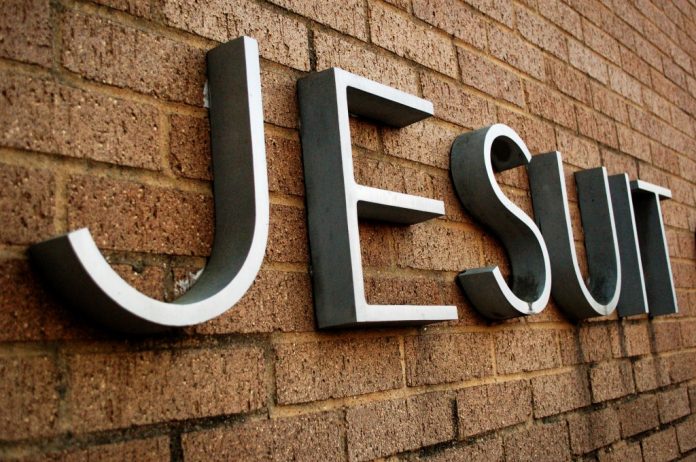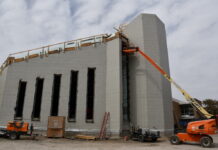All Jesuit students know the feeling of anticipation as they shuffle through their mail during the spring of their 8th grade year. They have taken the ISEE, they have received letters of recommendation, they have completed interviews, they have sent in their middle school transcripts. It’s hard to imagine a more stressful process for these hopeful young teens, and recently that stress seems to be increasing. New applicants and their parents now must ask themselves a question before applying to Jesuit: is this school getting harder to get into? The answer to this question is much more complex than a simple yes or no. In short, its both.
On one hand, the admissions process at Jesuit has not changed significantly, if at all, in recent years. As Mr. Tim Host puts it, “We still want the same type of kids with a wide range of abilities and a diversity of interests.” In this way, it would seem that Jesuit has not, in fact, gotten any more difficult to get accepted into because the admissions process itself has not become more selective or more strenuous.
Class sizes remain relatively consistent, and the size of the school has not increased or decreased significantly. This means that it is not as if less kids are being accepted to Jesuit, thus leading to the percentage accepted decreasing. In reality, the acceptance rate and the class sizes have remained relatively static. “I think the school is about the size it needs to be right now,” say Principal Mr. Tom Garrison,”so I think a good way to look at it is if 260 seniors graduate then that will be the size of the incoming class.”
What’s more, one might think that a search for more diversity in the school could lead to more difficulty in being accepted because, for instance, perhaps a typical Jesuit applicant in past years applies for the fall of 2014. Someone on the outside of the school might believe that it isn’t out of the realm of possibility for this applicant to be declined because there isn’t any aspect of their profile that contributes to the diversity of the school, whether it be ethnicity, religion, or special circumstances.
However, in reality, we know that this is in fact not a possible explanation because Jesuit still searches for the same types of kids to accept. “I think we have been consistent since I’ve been here,” says Mr. Erik Burrell,”there’s always been a mission to encourage all different types of diversity be it geographic, socioeconomic, ethnic, religious. And so that’s been a consideration.” However, he continues “I don’t see a lot of change. There’s a consistency to what the Jesuit mission is and following through with it.
So, what could it be that is driving this question? What is causing people in and around Jesuit to point out the difficulty of being accepted. The answer lies not in the school, but outside of it. Jesuit is not changing, as far as admissions go, but the applicants are. The admissions staff has noticed an interesting trend in the past few years. To them, it seems like Jesuit is just getting smarter. “We are seeing an increase in the average ISEE scores and grades,” says Mr. Host. “If you took our top ten percent of students and compared it to Cistercian and St. Mark’s, we are as high or higher than those other schools.” Mr. Host points out, though, that while these other prestigious private schools in the area may only accept the exceptionally academically gifted, Jesuit stays true to accepting kids with all types of abilities and interests. This doesn’t mitigate the simple fact, though, that Jesuit’s academic reputation continues to skyrocket. “I think that Jesuit has taken tremendous strides,” says Mr. Host, “I think we are attracting more people who see us as equal to the academics of other ‘name brand’ schools.”
Mr. Garrison offers another interesting insight, though they are, as he puts it, “generalizations that may or may not be accurate, but they’re my best guess.” He suggests that perhaps the economic calamity of 2008 could have possibly contributed to the increase in the number of applicants to Jesuit and thus the increase of academically gifted applicants. To him, Dallas seemed more immune to the economic problems that some other big cities were experiencing.”Dallas is a place people want to live,” he says, “some of the big cities with Jesuit schools have people moving out of them, Dallas is the exact opposite.” Because of this, a steady increase in the number of applicants has arisen, and thus, even though Jesuit is not accepting any more or fewer people, “the perception is that its more difficult,” Garrison says. “We can take more people from the top,” he continues,”the way the numbers work out, its more competitive.”
In addition, students at younger and younger ages are now preparing themselves not only for high school, but for college admissions and standardized testing. “I have seen in the last fifteen years feeder schools are now looking at our curriculum to see how to prepare kids to get into Jesuit. And I think there are more schools doing ISEE prep,” says Mr. Host. Mr Garrison concurs, saying “We are definitely seen as a college prep school, so kids that have aspirations to selective colleges would look at us and say ‘That’s a good place for me to go.'”
One final explanation could be simply that Jesuit is always improving. “If we can get a kid on campus,” says Mr. Host, “they’re sold.” And with all of the new additions such as the Information Commons, athletic tower, and new gym, it is easy to see why kids just want to come to Jesuit. To Mr. Garrison, this phenomenon is very real. “I think there’s no way around the fact that the facilities need to be clean and functional and we are being compared to schools that have nice campuses.” However, he cautions that Jesuit must not get caught up in an “arms race” in attempts to attract applicants. Instead, he says, “Let’s provide the best possible things we can in our budget.”
So, it is not unreasonable to say that Jesuit is getting harder to get into; however, it is more accurate to say that Jesuit is becoming more competitive to get into. Jesuit has not changed its admissions process, Jesuit has not pushed diversity any more than it has in the past, Jesuit is not accepting less kids, and Jesuit still looks for the same types of applicants. The reality is not simply that more students are applying, and but more academically gifted students are applying. The result allows Jesuit to select more kids from the very top of the pool and thus have more academically talented classes than ever before.
Simply put, Jesuit applicants are just getting smarter.






